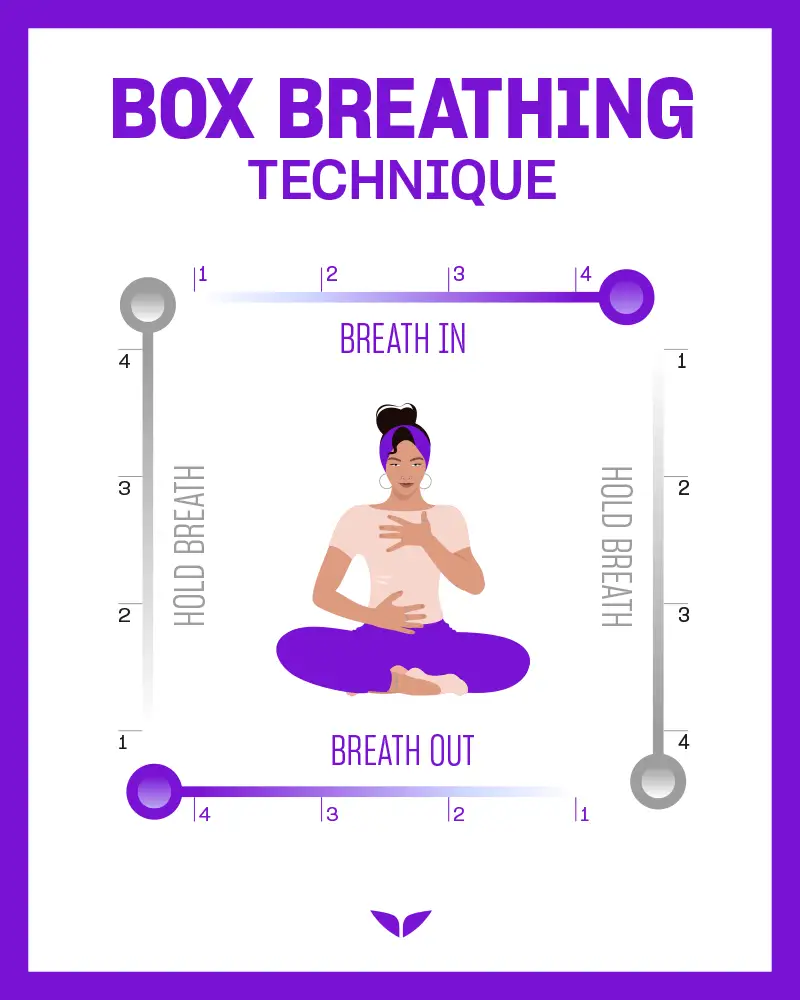Your breath is your innate and ultimate connection with life. And when you work on something as natural as breathing consciously and intentionally, this breathwork can pay off more than any medication.
In fact, breathwork promises to be the future of medicine, helping people alleviate stress and anxiety, fall asleep faster, energize themselves, improve endurance, and reach peak human experience.
So, how can you master the power of your breath?
Here’s a down-to-earth guide to reaping the benefits of breathwork training, according to Niraj Naik, SOMA Breath® creator and trainer of Mindvalley’s Breathwork for Life Quest.
This practice can improve your life and help you live longer and happier with more peace of mind — all on demand.
What is breathwork?
Breathwork is any breathing exercise or technique designed to improve your physical, mental, emotional, and spiritual well-being. It’s the intentional alteration or use of your breath.
In other words, any conscious control of your habitual breathing pattern can be referred to as breathwork.
How is breathwork different from meditation?
Meditation is about observing your breath as you breathe naturally, without manipulating it. It’s a passive way of increasing your awareness.
Breathwork, on the other hand, is a form of active meditation based on breathing techniques. It focuses on altering your state of consciousness and elevating your well-being.
11 types of breathwork and 6 breathing techniques
According to Niraj, breathwork has been preached as a one-size-fits-all panacea for everything.
“But all breathwork styles revolve around one technique, and one technique can never be a panacea for all,” he further explains.
So, what are the most common types of breathwork and breathing techniques?
Here are the eleven most transformational types of breathwork out there:
- Rebirthing breathwork
- Prāṇāyāma
- Holotropic breathwork
- Wim Hof breathwork
- Shamanic breathwork
- Integrative breathwork
- Transformational breathwork
- Biodynamic breathwork
- Clarity breathwork
- Zen Yoga breathwork
- SOMA breath
Here are the six most common breathing techniques:
- Box breathing
- 4-7-8 breathing
- Alternate nostril breathing
- Breath focus technique
- Equal breathing
- Resonant breathing
- Pursued lip breathing
Why is breathing so important?
Your breath is an evolutionary mechanism we’ve developed to survive. It’s the communication tool you use to send signals to your body about your immediate environment.
For example, our ancestors in Africa would take a short, sharp breath when seeing a lion. They would hold their breath to stay unheard by a predator. It’s called “prey breathing.”
And most people breathe in the same way all the time — shallowly — communicating to their bodies that they are in constant danger.
In response to shallow breathing, the body produces cortisol and adrenaline. It clogs your blood and weakens your immune system.
The more cortisol and adrenaline you have in your system, the lower your intelligence, the less connection with logic you have, and the less empathy you have.
The perfect human breathes as though they aren’t breathing at all.
— Lao Tzu
Simply focusing on your breath alone stimulates the mind-body connection. If you do this a few times a day, you will experience a tremendous impact on your mental health.
This is why breathing correctly is important to maintain your physical and mental health. Even if you’re breathing shallowly 24 hours a day, with deep diaphragmatic breathing, you give yourself a bit of a break.
Other benefits of breathwork
According to science, potential health benefits of breathwork include:
- Alkalizes your blood PH
- Has anti-inflammatory effect
- Elevates your mood
- Balances blood pressure
- Increases time in deep sleep
- Reduces PTSD and treats traumas
- Fortifies respiratory function
- Improves immune system
- Releases stress hormones from your body
- Lowers depression and anxiety
- Increases mental focus
- Elevates your outlook on life
Niraj explains that breathwork is like a pharmacy of different techniques. It can give you peace of mind and peak experiences.
“Just with simple breathing techniques, you can reach peak human experience, an ecstatic state where you can truly transform,” he adds.
How to do breathwork
Depending on the chosen breathing technique, you actively focus on your breath, manipulating your inhales and exhales accordingly.
For example, box breathing.
How to do it:
- Step 1: Breathe in, counting to 4 seconds, slowly filling your lungs with air.
- Step 2: Hold your breath for 4 seconds.
- Step 3: Slowly exhale through your mouth for 4 seconds.
- Step 4: Repeat steps 1-3 until you feel calm.

Frequently asked questions
What happens during breathwork?
Breathing is directly linked to both parts of the autonomic nervous system — the sympathetic nervous system (SNS) and the parasympathetic nervous system (PNS). The SNS activates when you are in stress, danger, or physically active, and your breath becomes fast and shallow. So when you breathe through your mouth and when your breath is shallow, it signals your body you’re in danger or stressed.
Contrary to shallow breathing, when you breathe smoothly and rhythmically, it activates the PNS. As the breath rate increases, it increases alertness in the brain, bringing your body back to its normal state — a state of relaxation and calmness.
So, depending on a breathing technique, you can either promote alertness, increase focus and energy levels by activating the SNS or counteract the stress response by turning on the PNS.
Several studies have found a correlation between deep breathing techniques and a lower heart rate. On top of that, breathwork can significantly reduce blood pressure and help with stress management.
What happens after a breathwork session?
You feel peace and get a sense of increased relaxation, calmness, and balance. Your stress and anxiety decrease, replacing them with a feeling of freedom from any tension. On top of that, breathwork often gives you new perspectives.
According to Niraj, you reach a full-body state of bliss and peace after a breathwork session without needing anything external.
Breathwork is about cultivating a state of peace, a peace of mind. With that, if love comes or goes away, it won’t matter to you anymore.
— Niraj Naik, trainer of Mindvalley’s Breathwork for Life Quest
Is breathwork legitimate?
Yes, it is. A 2018 systematic research on the effects of slow breathing techniques has shown that breathwork can result in increased comfort, relaxation, pleasantness, vigor, and alertness, and reduced symptoms of arousal, anxiety, depression, anger, and confusion.
Let’s look at scientific studies on breathwork and its proven effects:
1. Cardiovascular system
Science has now proven what yogis and other traditions have been using for ages. For example, a 2016 review on the effects of yogic breathing techniques reported that Prāṇāyāma produces beneficial effects on the cardiovascular system.
2. Parasympathetic nervous system
A 2017 review has shown that slow and balanced breathing activates the parasympathetic nervous system. It kickstarts our relaxation response when activated, leading to decreased heart rate, dilated blood vessels, and reduced blood pressure.
3. Sympathetic system
A 2018 study has shown that high-frequency breathing activates the sympathetic nervous system and can be used to increase your ability to sustain attention and the state of wakefulness.
4. Endurance
If you want to increase your endurance, you can use breathing techniques utilizing controlled hypoxic states. A 2009 research has shown that nasal breathing is an effective way to improve aerobic capacity and endurance performance. Nasal breathing is one of the breathwork fundamentals that increases oxygen uptake in the blood.
Niraj explains intermittent hypoxia is a brief period of low oxygen in your blood, which creates a positive stress response in your body. In SOMA breathwork, you train yourself to hold your breath beyond your comfort zone to strengthen and nourish the system.
5. Sleep and insomnia
Breathwork can help you regulate your sleep and treat sleep disorders. A 2009 study reported that prolonged inhales along with humming exhales activate your parasympathetic system, inducing the relaxation response. As a result, you fall asleep quickly and stay asleep longer.
Another 2014 study has shown that slow, paced breathing improves sleep quality in people with insomnia.
Can breathwork be harmful?
If done correctly, breathwork is a safe and effective practice. Yet, controlled deep breathing should not be confused with “big breathing,” known as hyperventilation.
Taking bigger than necessary breaths disbalances the oxygen-carbon dioxide exchange in your body, impairing blood flow to the brain.
Overbreathing can also lead to hypoxia — low oxygen levels in your cells and tissues. Less oxygen means less energy — as a result, you feel tired, fatigued, and lethargic. Also, lack of oxygen can make it difficult to concentrate and remember things.
Important: If you suffer from intense anxiety or panic attacks, which makes you prone to hyperventilating, consult your doctor or practitioner before engaging in any controlled breathwork.
Niraj explains that we’ve been conditioned that heavy breathing through your mouth gets more oxygen to our cells. But it’s the opposite — when you breathe through your mouth deeply, you’re shutting down the blood supply to your brain.
“When you smoothly and rhythmically breathe through your nose, you get a flood of oxygen going to where it needs to go,” he adds.
Unlock the SOMA within
One of the Vedic legends tells a story about a mysterious drink called “soma.” This sacred juice gave deities immense power, immortality, freedom from sickness, and a deeper connection with themselves and the divine.
When it ran out, they had to learn how to create it from within. This wisdom laid a foundation for tantric yoga, meditation, and breathwork.
Niraj explains that you can reach a state of total bliss and optimal health and well-being by mastering your breath with SOMA, the world’s leading breathwork methodology.
If you’re looking to heal, transform, or transcend, utilizing all the benefits of breathwork, join Mindvalley’s Breathwork for Life Quest with Niraj Naik. You can check out a sample class of the quest by registering to Mindvalley for free.
In just 14 days, Niraj will permanently transform the way you breathe. You will learn:
- How to reverse aging through breathing
- SOMA breathing techniques for optimal digestion and nutrition and deep sleep
- How to use breathwork for spiritual awakening and reaching the peak human experience
Welcome in.









